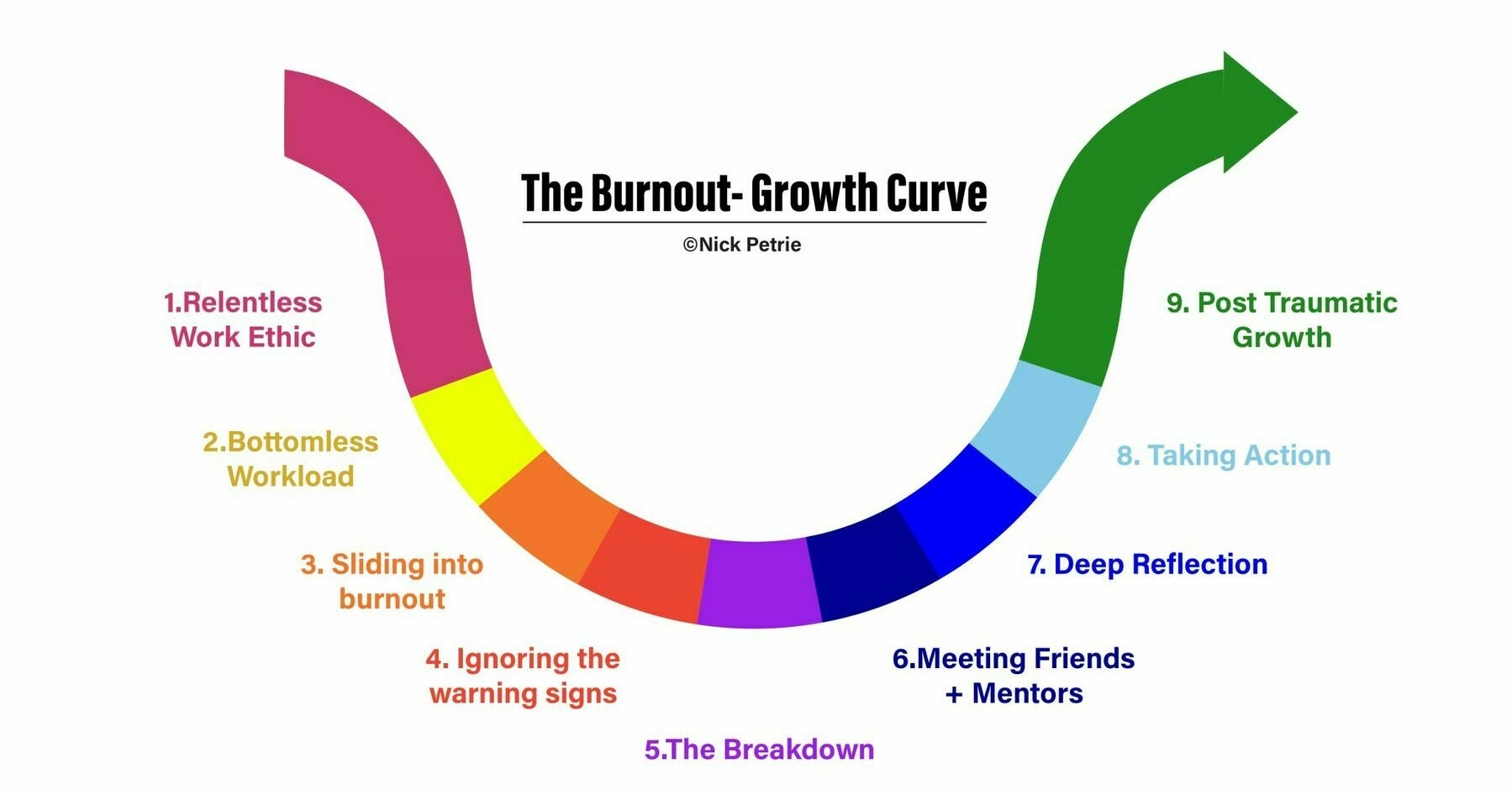The burnout curve
I stumbled across this on LinkedIn. There doesn't seem to be an authoritative source yet other than the author's (Nick Petrie) social media posts, which is a shame. So I'm quoting most of it here so I can find and refer to it in future.
In terms of my own experience, I slid down that slope pretty quickly in my teaching career, and definitely experienced the 'trap' of going back into a similar situation in a different school. It was also toxic as I had been promoted quickly and, looking back, probably beyond my abilities and experience at the time.
But the great thing about this graphic is that it shows that it's possible to dig your way out, as I did, by realising that a different path is possible. It hasn't always been plain sailing, and there have been other, lesser, traumas since. But I've definitely grown from my earlier experiences, and this is a handy chart to show people who are near the bottom of the curve.

When we interviewed people who had burned out, they told us remarkably similar stories.1. A relentless work ethic – they had a set of beliefs and stories that drove them to work hard - I will deliver, I won’t let people down, I must give 100% at all times.2. Bottomless workload – they joined organizations that rewarded their work ethic with endless work. The harder they worked the more they were given.3. Sliding into burnout – thoughts of work became constant. They had trouble switching off in the evenings, work was taking over their life.4. Ignoring the warning signs – their body was sending signals that something needed to change. They were tense, irritated, exhausted. But they couldn’t slow down – there was too much to do.5. The breakdown – For those who would not listen, the body and brain had a last resort. They shut down. People couldn’t get out of bed, couldn’t drive, couldn’t read. The body refused to go on.The trap for many people is the belief that rest is the solution. So, they took a break – a week, a month or a year. They then went back to the same work, with the same mindset and the same behaviors. They got the same result.The people we interviewed who genuinely overcame burnout followed a common path.6. Meeting friends and mentors – they realized they couldn’t repeat their past. They needed new perspectives and a new approach. They got these from family, peers, coaches, therapists and support groups.7. Deep reflection – they came off autopilot for the first time in years. They reflected deeply on the past – what caused me to burnout? What was driving me? Then the future – what sort of work and life do I want going forward? How can I move myself towards this vision?8. Taking action – they took new actions, sometimes big – change of job, change of career - sometimes small - they set new boundaries, restarted a hobby, got a therapist. Some things helped, some things did not. It didn’t matter. The key thing was they were doing NEW things. They were not repeating their old habits. New actions led to new insights and habits.9. Post traumatic growth – when we interviewed people who took this path 2 years after their burnout, the most surprising thing was how much they had grown from the experience.
Source: Nick Petrie | LinkedIn